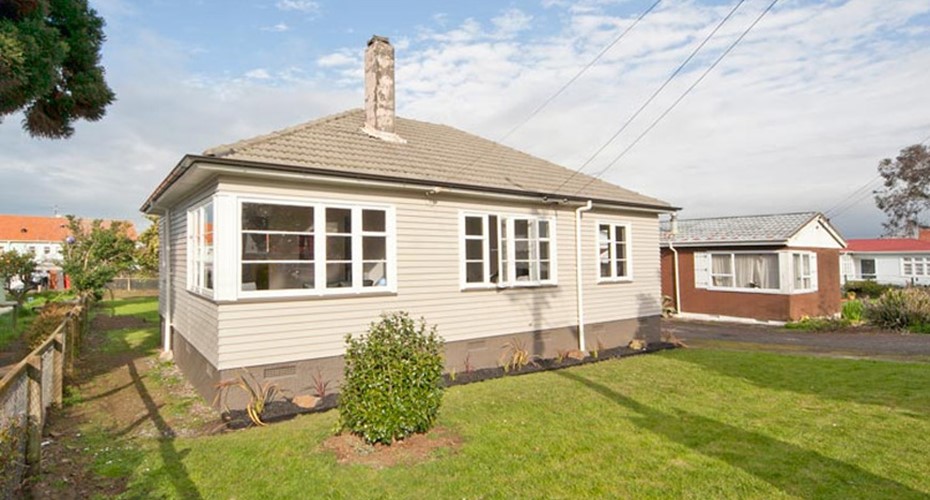Risk with houses built before 1945


Post by John Bolton - Squirrel Founder
We’ve had a couple of interesting client problems this week that we’ve solved for them but it is a good wake up call on the risks of pre-1945 houses. If there was one thing to remember don’t automatically assume you’ll get insurance. If you are buying an older house get your insurance arranged before you go unconditional on finance. We’ve noticed that insurance companies are getting fussier when it comes to insurance. It is probably the result of Christchurch and the size and nature of the claims. The most important thing to realize up front is that your lender requires you to have full replacement cover insurance. If you have enough equity (more than 20%) we can generally have this reduced to present value cover, which is a lesser policy.
Dux Quest Plumbing
Insurers hate Dux Quest plumbing. This is a black plastic piping that was installed during the 1970s and 1980s. There are numerous claim incidents of it bursting and causing significant water damage. If a property was renovated during the 1970s or 1980s then insurers are going to want the plumbing checked. If Dux Quest plumbing is present it will need to be replaced otherwise you will not get full replacement cover on the house. We recently had a client where the Insurer put an exclusion on the policy for Dux Quest Plumbing simply because a renovation “may” have been completed in the 1970s. The bank refused the limitation on the insurance cover and delayed settlement. TVNZ ran an interesting news piece on Dux Quest Plumbing here.
Scrim and Sarking
Insurers hate Scrim and Sarking. Scrim is essentially sacking that has been stapled to planks or horizontal thin wooden strips (sarking.) It has been plastered over to form walls in the late 1800s and early 1900s before plasterboard was invented. For insurers it represents a fire hazard especially when combined with old wiring. Our client had a 1905 villa. It had been fully renovated in 2004 but still had some scrim behind the wallboard. In other words the previous owners had chosen to wallboard over the top of some of the Sarking instead of removing it. Initially their insurer said yes to cover over the phone but when it came to getting the policy issued, they declined. In a panic (and in tears) the client rang and was rejected by at least two other insurers. Luckily they were still 1 month from settlement (but they had gone unconditional.) We managed to use our Insurance Agent to get cover by going directly into a senior underwriter. Just like the bank, when you ring an insurer you’re typically dealing with someone junior that has limited experience to interpret the insurer’s own guidelines. The house was actually in really good condition and had been fully rewired.
Pre-1945 Insurance Check List
For houses built before 1945 insurers require the house to be in good structural condition to get full replacement cover. You will have to answer questions on these in any insurance application and you must be 100% honest or risk invalidating your cover at claim time. The key criteria are below:-
Electrical Switchboard and Wiring
The wiring needs to have been replaced. If it hasn’t you’ll need to get a sign-off from an electrician that it is safe and will need to commit to replacing it with a short timeframe usually six months. Irrespective of the insurer you should replace the wiring and switchboard anyway, so it is a cost that needs to be factored in when you buy. Allow $10,000 for a house to be fully rewired.
Roofing
If there is an iron roof it will need to have been replaced within the last 30 years and painted within the 10-15 years. Cost wise iron roofing will cost $10,000 - $15,000.
Piles
The house will need to have been replied or the piles will need to be in good condition.
Wall Lining
The house will need to have been relined. In particular the insurer is looking for scrim and old wiring and old plumbing. If a house hasn’t been relined then there will be an almost Nazi focus on wiring and plumbing. To reline a house (including plastering and painting) allow for $25,000-$30,000.
Receive updates on the housing market, interest rates and the economy. No spam, we promise.
The opinions expressed in this article should not be taken as financial advice, or a recommendation of any financial product. Squirrel shall not be liable or responsible for any information, omissions, or errors present. Any commentary provided are the personal views of the author and are not necessarily representative of the views and opinions of Squirrel. We recommend seeking professional investment and/or mortgage advice before taking any action.
To view our disclosure statements and other legal information, please visit our Legal Agreements page here.

